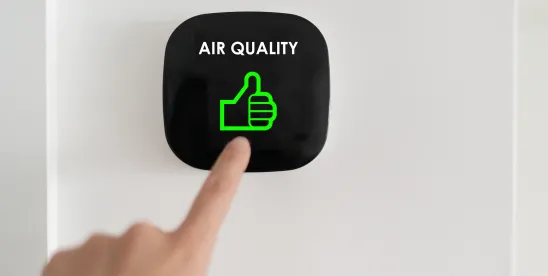On Friday, the D.C. Circuit reinstated the affirmative defense for emergency situations resulting in exceedances of emission limitations in Clean Air Act Title V operating permits. That defense, available in the Title V regulations since their inception in 1992, was rescinded by EPA in 2023. The D.C. Circuit in SSM Litigation Group v. EPA dismissed EPA’s legal justifications for the rescission, striking at the core of EPA’s justifications for rolling back similar defenses across EPA’s Clean Air Act programs.
What is the emergency affirmative defense?
The Title V regulations have long included an affirmative defense when emission limitation exceedances result from sudden, unforeseeable events beyond the control of the source—such as equipment failures, natural disasters, or other emergencies.
To qualify, the source must demonstrate:
- The exceedance was caused by an “emergency” as defined in the regulations;
- The facility was properly operated at the time;
- All reasonable steps were taken to minimize emissions; and
- Timely notification was provided to the permitting authority within two working days.
The defense does not apply to exceedances caused by poor design, inadequate maintenance, operator error, or careless operation.
Removal and Resurrection of the Emergency Affirmative Defense
In 2023, EPA rescinded the longstanding affirmative defense for emergencies in its Title V regulations at 40 C.F.R. Part 70. EPA justified that action on the legal grounds that the Clean Air Act does not allow affirmative defenses that effectively limit a court’s ability to determine appropriate remedies or that amount to exemptions from continuous emission limits.
The SSM Litigation Group, an organization of trade and business associations, filed a petition for review in the D.C. Circuit. In a short and direct opinion issued on September 5, a three-judge panel reversed the EPA’s rescission wholesale, holding that:
- A complete affirmative defense does not encroach on the judiciary’s role in assessing penalties for emission limitation violations because it relates to liability, not remedies. Complete defenses to liability are different than a defense that limits judicial remedies, like the provision in Section 112 standards vacated by the D.C. Circuit in 2014 in Natural Resources Defense Council v. EPA that limited when district courts could assess civil penalties in Clean Air Act citizen suits.
- Complete affirmative defenses do not amount to an exemption to a continuous emission limit and EPA was wrong to conflate the two. A complete affirmative defense to liability does not render an emission limit non-continuous because they remain in force and continuous. A defense does not change that.
Affirmative Defenses Across Clean Air Act Programs
While the decision directly affects Title V permitting, its reasoning may influence EPA’s approach to affirmative defenses under other Clean Air Act programs:
- State Implementation Plans: The D.C. Circuit’s March 2024 decision in Florida Electric Power Coordinating Group v. EPA vacated most of EPA’s 2015 SIP Call, which had required states to remove affirmative defenses from their state implementation plans.
- The EPA explained how it’s moving forward in a memorandum issued on December 19, 2024.
- The decision in SSM Litigation could further impact the future evaluation of state plans.
- Clean Air Act Section 111 and 112 Standards: Since NRDC, EPA has removed or omitted affirmative defense provisions in numerous regulations under Clean Air Act Sections 111 and 112.
- In October 2024, EPA removed affirmative defense provisions to civil penalties from the NESHAP for oil and natural gas production and natural gas transmission and storage.
- In June 2024, EPA proposed removing affirmative defense provisions for malfunctions from three New Source Performance Standards and fifteen NESHAP. EPA recently finalized that proposal for the Polyether Polyols Production Industry NESHAP.
- We may see affirmative defense provisions preserved in existing regulations and included in future rulemakings.





 />i
/>i

